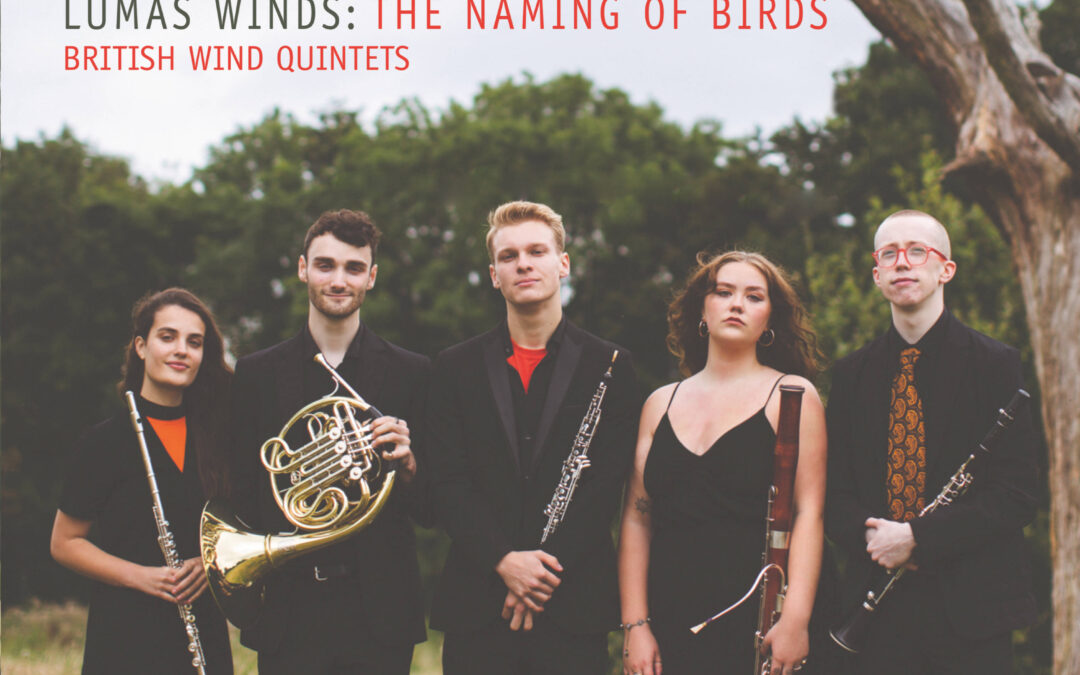Lumas Winds
Champs Hill Records CHRCD170
The five players who make up Lumas Winds are recent graduates of the Royal Academy, and the Royal College of Music. They were winners of the 2023 Royal Over-Seas League Music Competition, receiving the mixed ensemble prize. I can we why; they are lively group of excellent players who bring much colour and energy to the five works on this disc.
As the works are all from the last six decades, there is a similarity in the sound world of these pieces, and perhaps the CD is not to be listened to all-in-one sitting. Having said that, the works each have their own characteristic, and each composer his or her own identity.
The title of the CD is taken from Sally Beamish’s work, and her inspiration was the calling of birds, although she was also much attracted by their Latin names. Each movement begins with a recording of the bird itself – partridge, lapwing, linnet and corn bunting sharing a movement, likewise, barn owl and bullfinch, and I am not sure how helpful this is, because the music does not seem to imitate the bird, except very obviously the owl, which is represented by a honk on the bassoon, achieved by an extended playing technique. It is a lively and inventive work, giving each of the instruments a solo part in one of the five movements.
The earliest piece is Mathias’s Wind Quintet of 1963. The five movements include a scherzo and a waltz, and the work ends with a dance. Mathias writes in a neo-classical style, and the work reminded me of Ibert and Francaix. The playing is alert in the quicker movements, although I felt the Elegy dipped a little in intensity.
The Three Little Fantasies are derived from Oliver Knussen’s song cycle Hums and Songs of Winnie-the-Pooh.These tickle the ear with musical textures and rhythms. They are modest fantasies which, Knussen, says are ‘concentrated in manner and light in effect’. I agree.
Maconchy’s Wind Quintet of 1980 is a solid work bearing some relationship with the cycle of her thirteen string quartets. Everything is well argued and has a sense of purpose. Again, there are five movements, and the first gives each instrument a chance to shine, the third is a brief and lively vivo, and the fourth gently melodic.
The Wind Quintet of Thea Musgrave (1992) is equally assured, but this time the four sections merge into each to make a satisfying whole. There is plenty of drama in the work, and some very busy writing in the movement marked ‘drammatico’. The last movement winds down and leaves us with a question mark.
Gavin Higgins has given his quintet a name After Fallout (2010) and it begins with an ominous crescendo. Higgins finds wonderful textures throughout the work, and towards the end there are soaring discords. The work ends quietly and bleakly.
Review by Ronald Corp

